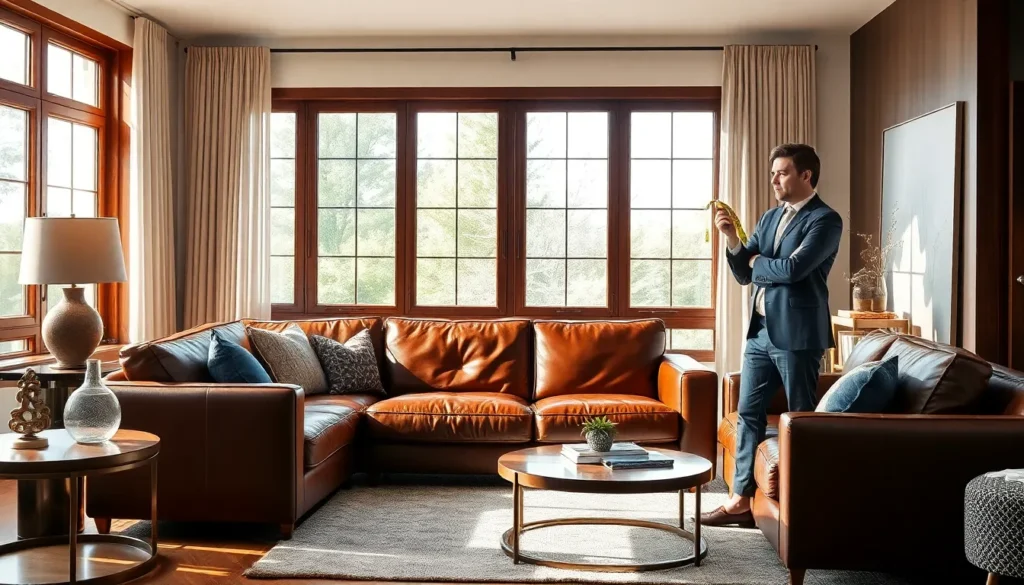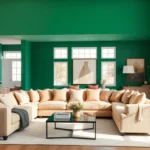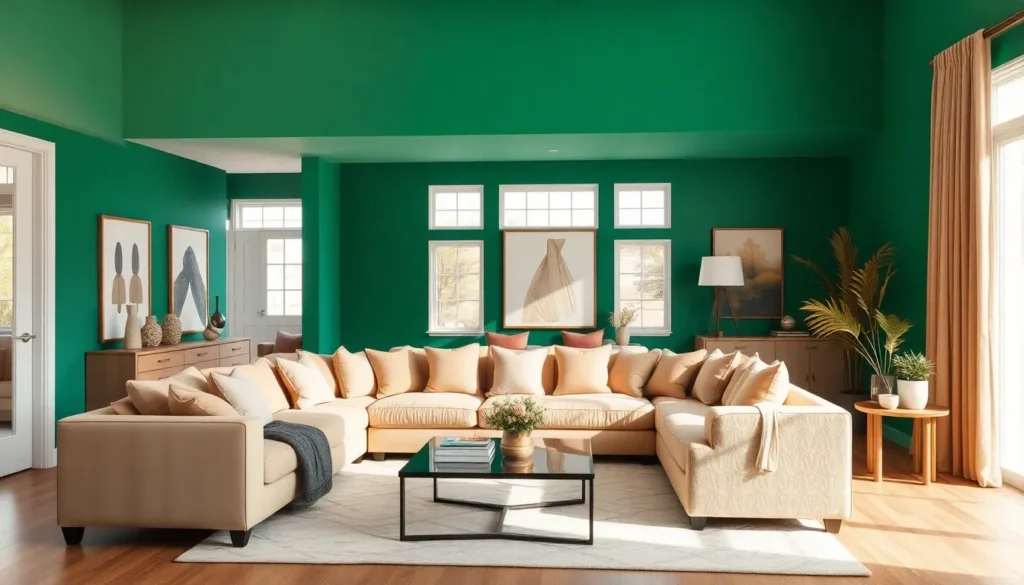Leather furniture is making a comeback, and it’s not just because everyone suddenly decided they want to channel their inner James Bond. This revival is all about embracing timeless elegance and durability that only leather can provide. Gone are the days of being stuck with flimsy, fast-fashion furniture that falls apart faster than a bad punchline.
Table of Contents
ToggleUnderstanding Leather Furniture Revival
The resurgence of leather furniture emphasizes its timeless appeal and durability. Consumers now prioritize quality over fast-fashion options, shaping a revival rooted in sophistication.
Definition and Historical Context
Leather furniture refers to seating and upholstery crafted from animal hides, primarily cowhide. Historically, it served as a symbol of luxury and longevity, often found in affluent homes and prestigious establishments. Mid-20th century designs embraced leather, solidifying its status in modern interiors. After a decline in favor of synthetic materials, renewed interest emerged in the early 21st century, driven by an appreciation for craftsmanship and sustainability.
Current Trends in Leather Furniture
Current trends reflect a blend of traditional aesthetics with contemporary styles. Designers offer sleek silhouettes alongside distressed finishes, appealing to diverse preferences. Sustainable practices in sourcing materials significantly influence purchasing decisions. Additionally, bold colors, textures, and innovative designs highlight the adaptability of leather. As consumers seek personalized touches, some opt for custom pieces that reflect individual tastes and lifestyles. This dynamic market reinforces leather’s position as a favored choice for lasting elegance in modern homes.
Benefits of Leather Furniture

Leather furniture offers numerous benefits that reinforce its resurgence in modern interiors. Consumers prioritize durability, aesthetic appeal, and sustainability when making furniture choices.
Durability and Longevity
Durability stands out as a primary advantage of leather. Leather resists spills, stains, and scratches, making it ideal for households with children or pets. It ages gracefully, developing a unique patina over time that enhances its character. Many leather pieces can last for decades with proper care, proving to be a valuable investment. Maintenance typically requires simple cleaning and conditioning to preserve its quality, contrasting sharply with fragile, synthetic materials that often deteriorate quickly.
Aesthetic Appeal and Style
Aesthetic appeal is another significant reason for leather’s revival. Various textures, colors, and finishes provide versatility to suit any design scheme. Leather’s natural sheen and richness add sophistication to any room, whether styled in traditional or contemporary settings. Customization options enable consumers to select pieces that align perfectly with their personal taste. Designers often incorporate sleek silhouettes and distressed finishes, merging elegance with modern sensibilities. This adaptability makes leather a timeless choice for both revamped and newly designed spaces.
Types of Leather Used in Furniture
Leather furniture comes in various types, each offering unique characteristics. Understanding these differences helps consumers make informed choices that suit their specific preferences and needs.
Top-Grain Leather
Top-grain leather ranks among the highest quality leathers used in furniture. This leather retains the natural grain while being sanded and finished to remove imperfections, resulting in a smooth texture. It boasts durability, making it resistant to wear and tear. Commonly, top-grain leather develops a rich patina over time, enhancing its visual appeal. It’s easier to maintain than other leather types, as it resists staining while remaining breathable. Many designers and homeowners favor it for high-end pieces, appreciating its balance of luxury and functionality.
Split Leather
Split leather offers an affordable alternative to premium leathers. This type comes from the lower layers of the hide after the top layer has been removed. Though not as durable as top-grain leather, split leather still provides a sturdy option for furniture. It undergoes a process that may include bonding with a synthetic backing, enhancing its strength and stability. The finish applied can mimic the appearance of higher-quality leather, allowing for stylish designs at a lower price point. Many consumers appreciate split leather for its versatility in different décor styles and settings.
Care and Maintenance of Leather Furniture
Maintaining leather furniture ensures longevity and retains its allure. Regular care enhances its natural beauty and durability.
Cleaning Techniques
Use a soft, dry cloth to dust leather surfaces weekly. For deeper cleaning, mix mild soap and warm water, dampening a cloth before wiping the leather. Avoid soaking the fabric, which can damage the leather. Rinse the cloth in clean water and wipe off any soap residue. Stains require prompt attention; use a leather-specific cleaner and follow the manufacturer’s instructions. Test any cleaning product in a hidden area before full application to prevent discoloration.
Conditioning and Protection
Apply a leather conditioner every six months to nourish the material. Opt for a product specifically designed for leather, as it helps maintain suppleness and prevent cracking. Before applying conditioner, ensure the surface is clean and dry. Use a soft cloth to distribute the conditioner evenly across the leather surface. Additionally, consider using a leather protector spray to create a barrier against spills and stains, further preserving the integrity of the furniture.
The revival of leather furniture signals a shift towards enduring quality and sophisticated design in modern interiors. As consumers prioritize sustainability and craftsmanship, leather continues to stand out as a practical and stylish choice. Its ability to age beautifully while offering unmatched durability makes it a worthwhile investment for any home.
With a variety of textures and finishes available, leather furniture caters to diverse tastes and design preferences. As the trend evolves, it’s clear that leather will maintain its status as a timeless element that enhances both traditional and contemporary spaces. Embracing leather furniture not only enriches home aesthetics but also aligns with a commitment to lasting value and sustainability.













